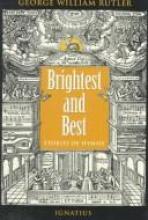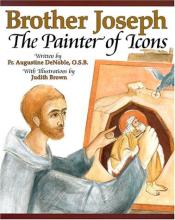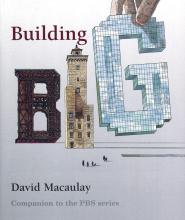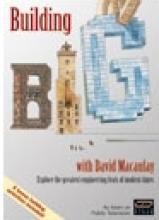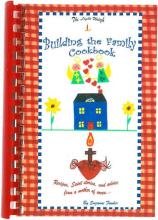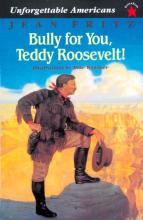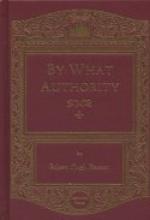No name
Bright Candles
Brightest and Best
This book consists of a fine selection of favorite hymns, including musical notation, and rather detailed stories about the authors of the text, the composers of the music, giving the student a good idea of how and when the music came about.
The author's purpose in writing the book "was to restore attention to some of the finest hymns, in the hope that they might replace the miserable afflictions that keep cropping up in ... 'missalettes'... It seemed to me that hymns might be better appreciated if we knew a little more about the stories behind them: first of all, who wrote them and in what circumstances." (From the Introduction).
Approximately 100 hymns are included. I'd like to note that the text of the hymns is often not the text that Americans today are most familiar with. There's a good reason for this. Over the years, the text of many hymns has been "simplified" which has often detracted from its meaning and significance. Fr. Rutler would like us to appreciate the songs as they were originally written.
What a wonderful Catholic resource for real music appreciation in the homeschool. What we give our children today in this realm may have a significant impact on turning back to more beautiful and reverent music in the future. Please note that there are some hymns that were not written by Catholics. Fr. Rutler explains in the introduction: "If the following selection of hymns joins to these great orthodox souls a Lutheran such as the war-ravaged Melchior Teschner ... this is testimony to the wonders God accomplishes through those who seek his goodness...some of these in their day wrote of doctrine more sturdily than [many of today's composers]."
Brother Joseph: The Painter of Icons
Tom was an ordinary boy who loved being outdoors and drawing whatever he saw. Although Tom found school distasteful, his teacher, Sister Aquinas, saw artistic talent in him and encouraged him and lent him books on religious art. He discovered that his favorite artist was Fra Angelico. He attended a high school seminary and discovered that he wanted to be a monk. There he becomes Brother Joseph and finds that his artistic talents are put to good use. "He knows that he is busy about the right things, happy that as an artist he is able to give so much joy and peace to others with his icons."
This is a nice story about art, vocation and using one's talents for God and others. My children especially enjoyed the charming verses that run through the monk's head - "My brush will up and downward go, I'll paint like Fra Angelico!"
Building Big
Originally written as a companion to the PBS series of the same name, Building Big stands on its own quite well — a good thing, because the videos are no longer in production.
If you are familiar with David Macaulay's other books, such as Castle and Cathedral, also reviewed here, Building Big has a similar visual appeal with drawings that delve into the details of the structures in a way that is both fun and informative. I would especially recommend this book to kids (and adults!) ages 10 and up who enjoy building toys such as Legos, K'nex, or wood blocks, as well as to those who are interested in historical structures or how things are made. Younger children who have similar interests will also enjoy the pictures, especially if a parent summarizes the text for them.
The book covers BIG Civil Engineering structures ranging in construction date from ancient Rome through the 20th century. There are sections covering bridges, tunnels, dams, domes, and skyscrapers, with four to ten chapters in each section, each covering the design and construction of an outstanding example of that type of structure. The examples are chronologically sequenced and show important steps in the history of the development of techniques and technology.
The combination of text and illustrations does an admirable job of making learning about building on a large scale enjoyable. Many excellent drawings and diagrams explain how particular structures were built, showing relevant details and the techniques used. They also explore why certain materials and designs were chosen as solutions to the problems specific to the desired function, siting, and other constraints.
Along with hands-on construction toys, books like this one can help kids develop a gut feel for forces, loads, and so forth, which are very important to future work in engineering or construction (even small scale construction like home improvement projects). Dh and I are both engineers, as are two of our sons. We have been surprised that many engineering students today lack that intuitive sense — possibly a consequence of more "virtual" play and less physical play — and would love to see that trend reversed.
Building Big with David Macaulay
This set of five DVDs by artist/architect David Macaulay provides many hours of insightful entertainment and a great introduction to science and technology on a practical level. Each themed film - Bridges, Skyscrapers, Tunnels, Domes and Dams - provides an in-depth historical treatment of the particular structure, interesting stories and overviews from famous structures, and basic scientific principles involved in each project.
The set features lots of great location shoots with David Macaulay narrating interesting stories and pointing out details of each site.
To give you an idea, "Tunnels" covers aqueducts and water-carrying tunnels of Ancient Rome, early canal and train tunnels of the 19th century (particularly in England and the U.S.), archaic and modern methods of tunnel digging (particularly under rivers), issues involving tunnel safety (both during the project and during use afterwards) with a special emphasis (in all areas) on the building of the Channel Tunnel in the 1990s between England and France. Each video also includes a "Building Small" segment and pamphlet so that families can tackle simple science projects at home that demonstrate principles of architecture.
Our family has really enjoyed these movies - from the four year old all the way up to Mom and Dad. The material is substantial, but easy to understand (particularly with the excellent use of computer graphics and artistic sketches).
I would recommend parental supervision with young children, at least for the first viewing. There are a few things that might be scary for little ones, such as a spooky introduction to the Tunnel show and some photos from an airplane crash in to the Empire State Building that might be a little disturbing. There are also some points in other movies that would be worthy of discussion, such as the environmental issues that come up in the Dams movie. Those are all the "sticky" parts I can remember at this point. I am hoping to view them again soon and will add to this list as needed. Overall, I consider the series to be very worthwhile and enjoyable.
Set of 5 DVDs or Videos (approximately 1 hour each)
Update April 2024: These videos are now "out of print" and difficult to purchase. However, I'm planning to review the book of the same title. Stay tuned. :)
Building on Nature
Like most art students and lovers, I have had mixed feelings about the architecture of Gaudi all my life. When our oldes son visited Barcelona and sent pictures of Gaudi buildings, I planned on learning more about him. Now I find this new and remarkable picture book telling children about a man who was perhaps little understood during his lifetime.
What I find in the warmly-illustrated pages is a likeable man! A devout Catholic, a lover of nature and of poverty, married to his life's hard work. Perhaps his art isn't traditional, in any shape or form, but there is a genuine aspect of Gaudi's work that one can't help being attracted to.
This picture book does a good job of bringing his life and work to young children and it is a fun read aloud, written in the present tense, in poetic lines. The author's note adds important biographical information including the fact that he was a very early recycler, using all sort of discarded materials in his buildings. A list of websites is also listed. I found this list of buildings with photos very useful!
Building the Family Cookbook
The book then follows the Liturgical Year's feast days with Saint's feast day or other feasts and includes a short biography of the saint or a description of the feast day along with a recipe for the day. Because the book follows the Liturgical Year, there is not a recipe for every single day.
The recipes vary. One day will be a main dish. The next day is a dessert. Surprisingly, the recipes are not the typical "diet" variety. In other words, the "St. Therese Fudge Brownies" have real butter and don't skimp on sugar. That is because The Light Weigh program allows the person to eat any type of food, just limited to small quantities. You do not need to be familiar with The Light Weigh program to enjoy the recipes or benefit from the wisdom of the book. But if you would like more information about The Light Weigh program, you can contact Suzanne at the webpage listed below.
The book closes with more advice on building a happy family, sources for the feast day information and an index to the recipes. Following her practical advice, sharing these wonderful saint stories, and enjoying these delicious recipes is a sure way to achieve Suzanne's goal of making dinner time your family's favorite time.
Bully for You, Teddy Roosevelt
This is an interesting biography of one of our nation's most colorful presidents. It was interesting to discover that Teddy Roosevelt (1858-1919) was a rather sickly youth who suffered from asthma. His determination in overcoming his illness and living a full life despite his rather frail body help to make him a man who loved life and tried to live his life to the fullest – especially enjoying the world around him. He was a nature enthusiast and an avid hunter and is considered one of the pioneers of the conservation movement – although certainly not what some today might call a "wacko environmentalist." This aspect of the story might lead to some interesting discussions with your children about a proper stewardship of nature. It is interesting to note how he was affected by the harsh winter of 1886-1887 which devastated the Dakotas where Roosevelt had a huge ranch. I believe this was the same year described in the book The Long Winter by Laura Ingalls Wilder. A comparison of the two perspectives might make an interesting writing assignment. I can't comment on the accuracy of the author's presentation of the politics of the day – especially the war in Cuba – as I haven't read much else about it. This book would provide interesting reading and discussion material for approximately grades 5-8.
By What Authority
It is early in the reign of Queen Elizabeth. Religion and politics are curiously mixed and confused. How will the people of England survive this tumultuous time and emerge as one of the great powers on the earth. This is the setting for By What Authority by Monsignor Robert Hugh Benson. It is the story of how two families, one Catholic and one Protestant, sort through the confusion and endure the suffering of finding and maintaining a religious identity.
The head of the Catholic family, Sir Nicholas Maxwell, is the Lord of a section in England just south of London. The Protestant family, Norris, lives next door and has a good rapport with the old Catholic family. The primarily Protestant village has great love for the Lord and his family and forgive them their superstitious religion. It is obvious that the younger Maxwell son is in love with Isabel Norris but the differences in their religions keep them apart – for a time.
Isabel Norris is a Jane Austen -type character, full of virtue and feminine moderation. She is happily Protestant and deeply devoted to her beloved Jesus. Her father, sensing the Maxwell youth's love for her, and worried lest the Maxwell ladies should convert her daughter to Catholicism, sends her to a friend in the country who is STRICTLY Puritan. His hope is that she will be repelled by the strictness and return to his middle-of-the-road Church of England Protestantism. Isabel is indeed horrified at the fiery God portrayed in the Puritan church but the movements of her heart and religious sentiments foreshadow her as a Catholic at heart. While she is away her father dies and when she returns, Lady Maxwell's sister becomes her living companion. This sister is actually a nun who was sent away from her convent and so begins the slow conversion of Isabel. Msgr. Benson is masterful at describing the mental and spiritual movements of a soul and so the reader is brought through all the agitation and wonder of Isabel discovering, discarding and finally accepting the truth about the Catholic Faith. In the midst of her struggles, young Hubert Maxwell has stated his intentions toward her and begs her to wait for him, claiming that the religious issue will resolve itself somehow. He leaves to sail off with Sir Francis Drake on one of his first piratical voyages. When he returns, ready to embrace her AND proud to announce his conversion to her Protestant faith, he finds that she has very nearly converted to Catholicism. He is furious and offers to be whatever religion she wants. In saying that, he has lost her. To her, the Faith is something so intrinsic that it cannot merely be put on and off as is convenient. She maintains her love for him through the whole story but she knows that she cannot be his wife.
All the while Isabel is suffering and coming into the Catholic Faith, her brother Anthony has graduated from Cambridge and, full of patriotism and religious fervor, sets out to set himself up in the world. He goes to work for the Archbishop of Canterbury and so is thrust into the politics and religion of the times. He has an occasion to meet and debate with a Catholic man and feels his Protestant beliefs disturbed. He also witnesses Edmund Campion's so-called trial and his execution and is very much affected by it. Msgr. Benson spends a lot of time describing the trial and relating the arguments made on both sides. During this trial, Anthony is basically converted. He sees that ALL the religious questions boil down to who has the authority to interpret the Bible and speak for Christ. Protestantism taken to its extreme would have each person interpreting the Bible as he would and becoming his own authority. That in itself did not fit with scripture, he thought. He realizes that the Church of Rome has the greatest claim to that authority. He submits his resignation to the Archbishop and attends an Ignatian Retreat with Father Robert Persons. At the end of the retreat he goes to tell his sister, Isabel that he has converted only to find her in the same situation. They come into the Church together to the great joy of the Maxwells (excepting Hubert).
Anthony becomes a priest at a seminary on the Continent and returns with Isabel to England at the time of the defeat of the Spanish Armada. He eventually is captured and threatened with torture and death. He meets with the Queen herself and she offers to let him leave the country alive yet have it let out that he signed "the oath" which says that he acknowledges the Church of England. He, of course, refuses and the enraged Queen sends him off to the torturers. He dies on Easter morning as Isabel kneels at his bedside reading the Gospel of the day. She has decided to leave England and perhaps enter religious life.
One of the most interesting aspects of the story is Benson's portrayal of Queen Elizabeth. She is fierce and unforgiving yet feminine and remorseful. He is very successful at describing the development of the awe in which her subjects hold her. She is awe inspiring. She is a formidable enemy and very moved by the loyalty of her people. She admires the gallantry and strength of the Catholic martyrs. She does not seem to be a deeply religious person herself and so cannot understand why these Catholics can't just accept things in order to live and have peace. He portrays her as having a certain goodness that is overshadowed by a multitude of forces, both within her and without.
The story would be excellent for upper high school level (and any interested adult). It might be interesting to read it along with a biography of St. Edmund Campion or Sir Francis Drake, and some history of the Spanish Armada. It is a compelling period in history and bears some deep thought as to its effect on today's world.


